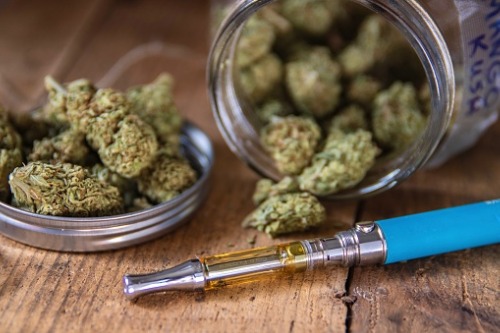

When electronic cigarettes (e-cigarettes) first appeared in Canada a decade ago, many healthcare professionals expressed major concerns about their potential harmful effects. They called for strict regulation and more research to ensure that Canadians weren’t falling into a health hazard trap – but this did not materialize.
Fast-forward to May 2018 and the federal government officially legalized e-cigarettes containing nicotine, and, in October 2019, the sale of cannabis-containing e-cigarettes was given the green light. Throughout this legalization process, healthcare professionals continued to warn about suspect respiratory problems caused by e-cigarette usage, or vaping.
These warnings around how e-cigarettes could harm users really came to life in summer 2019, with widespread recognition of a North American epidemic of e-cigarette, or vaping, product use-associated lung injury (EVALI). According to the Canadian Medical Association Journal (CMAJ), the EVALI “epidemic is ongoing, with more than 1,800 patients having been ill - most of them critically - and at least 37 having died. Most patients were younger than 35 years, and 14% were under the age of 18.”
The CMAJ (Vol. 191, Issue 48) gives a detailed report of a Canadian teenager who “developed a unique pattern of severe respiratory illness” which was rather like “severe, acute bronchiolitis” after vaping daily for five months. The condition was described by the teen’s doctors as very similar to “popcorn lung” – a rare lung disease previously seen in workers in the early 2000s who were exposed to the chemical flavouring diacetyl as they packaged microwave popcorn.
According to the CMAJ report, the Canadian teen vaped using flavoured cartridges. He also regularly added THC – a psychoactive constituent of cannabis. This trend - the introduction of THC to e-cigarettes - is one of the major liability roadblocks causing insurers to shrink away from cannabis coverage.
While the chemical widely deemed to cause “popcorn lung” is actually the diacetyl in the e-liquid flavouring, and not the THC cannabis element, the two are often “painted with the same brush” and this is making insurers cautious, according to Bob Bousfield, vice president and national property practice leader at SUM Insurance.
He told Insurance Business: “The vaping industry has not been regulated. This has allowed this chemical [diacetyl] to sneak into the loop and find its way into e-cigarette flavour cartridges. That has given a black mark to the whole of the vape business. Insurers are worried these liability issues are going to leak over into the cannabis business, especially as things like edibles, vapes and infused beverages grow in popularity like they have in the US. The cannabis vaping business, which had huge potential for profit in the Canadian market, all of a sudden is not so attractive.”
Kevin Lea, president of Fuse Insurance, has expressed similar issues to Insurance Business about the health issues surrounding vaping products. He described it as a “continuing challenge” which will be a major issue in the cannabis sector over the next 12 to 18 months.
“Vaping is one of the more popular ways of consuming cannabis in markets […] where it is already legalized,” he said. “However, counterfeit and low-quality vaping products are causing significant injury to a number of people, as detailed heavily in headlines across North America. With additional scrutiny in place on vaping products, there’s going to be a significant burden on both cannabis companies and their insurers to make sure that any vaping-related products being put in the marketplace are thoroughly tested in order to prevent any harm to consumers.”
